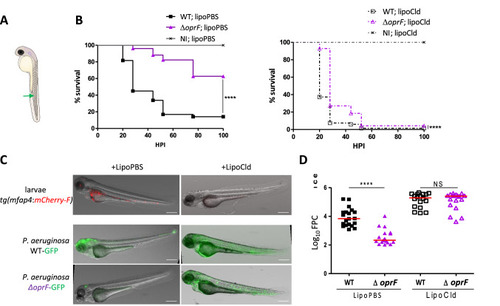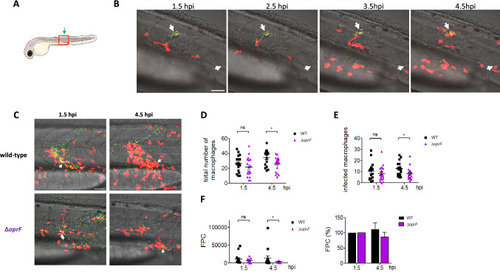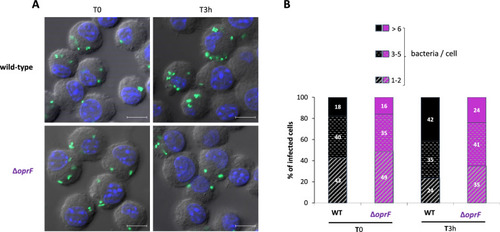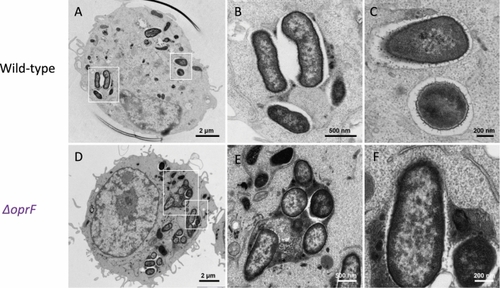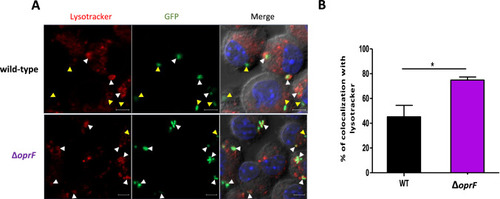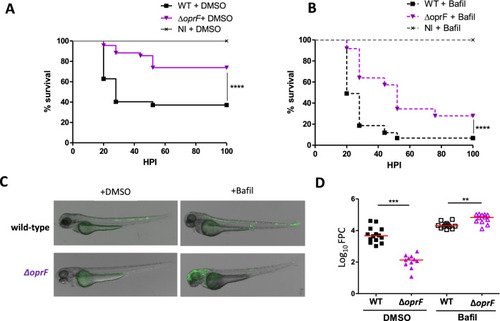- Title
-
Pseudomonas aeruginosa OprF plays a role in resistance to macrophage clearance during acute infection
- Authors
- Moussouni, M., Berry, L., Sipka, T., Nguyen-Chi, M., Blanc-Potard, A.B.
- Source
- Full text @ Sci. Rep.
|
The |
|
Real-time visualization and quantification of phagocytosis of |
|
Visualization and quantification of intracellular |
|
Transmission electron micrographs (TEM) of |
|
Colocalization of |
|
Effect of bafilomycin on the virulence of wild-type and Δ |

